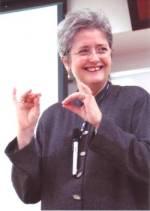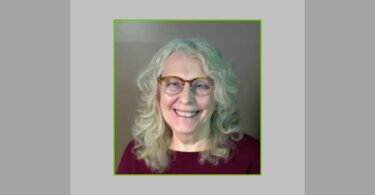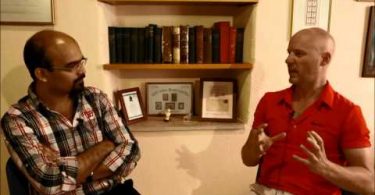EL: Sherlock Holmes?
MC: Yes! Sherlock Holmes! Sherlock Holmes was said to be brilliant because he knew when there wasn’t a dog barking. Very clever! I think that when we are working at our best is when we perceive there isn’t a dog barking! So – to mix metaphors – if I smell a rat…
EL: …so many animals….
MC: …I have a gift in this area. I don’t have many gifts. I have to work hard for every remedy. I’m not smart about remedies and facts; if a patient comes in and I say, “Silica!” I can be absolutely sure it isn’t Silica! I’m very bad at being intuitive about remedies; but, I’m 99% accurate when I hear a dog not barking, and so I’ve learned to rely on that. So, finally, after twenty or thirty minutes of really intense questioning, she finally said, “Oh my God! That’s when my older child fell down the stairs holding the baby.” So, I had her interview the older child and promise not to punish the child if she hadn’t, in fact, fallen down the stairs. And it turned out that the older child had dropped the baby – not far but she had banged her head on the corner of the stairs…
EL: Ouch!!!
MC: …and that’s when the crying started. The mother gave the baby Arnica, the baby went to sleep and woke up crying and hadn’t stopped since. When I teach this case, it’s unusual for the students to actually get the pathology. The baby had been thoroughly checked out by the doctor, there was nothing wrong with her. And so, what did the Arnica do, what had gone wrong, why on earth was this baby crying? When we are working at our best – to introduce yet another animal kingdom metaphor – we are the bee’s knees of medical detectives! Because we’re looking at the whole picture. Our ability to understand what’s going on across the board, and even in quite small areas, is very advanced, even without tests, but I knew at that point exactly what had happened! If you give Arnica immediately after an injury, there’s no swelling, right?
EL: I’m living proof of that!
MC: So there was no discoloration, there was no evidence, so, what was wrong with the baby? Do you know why she was crying?
EL: Why don’t you field that one, Alan?
AS: I think I’ll pass that one off to you, Elaine.
MC: Babies cry like that when they’re in pain!
EL: I knew that!
MC: LOL! She had a headache – after a head injury. One dose of Natrum sulph. 200C and before it had fully dissolved in her mouth, she stopped screaming and smiled.
EL: It’s the homeopathic miracle we’ve all heard about and many of us have experienced! What a great story! And good for you, Miranda, because the mother was very insistent about giving Chamomilla and I wonder how many homeopaths wouldn’t have relented, not bothering to look at what wasn’t there that should have been there! It’s a good lesson for us all!
MC: I relented twice! Interestingly, Natrum sulph was the only remedy she ever needed throughout her entire childhood. Now, let’s fast-forward the video of her life and imagine how her life would look had she not gotten that remedy. It looks very bad, I mean, we all know what happens when people develop a deep Natrum Sulphuricum state, right?
EL: Of course we do! Alan?
AS: I’ll let you handle that one, Elaine.
MC: They wind up as psychiatric patients!
EL: I knew that!
MC: Head pain after head injury–Natrum Sulphuricum, the number-one remedy! So, you need to know human nature; you have to understand pathology. I’m very fierce about that. We have to do really good Anatomy, Physiology, Pathology and Psychology to know the maps of the areas we’re working in. We have to know these. And then we have to know your homeopathic pictures and how they all fit together. Etiology: I mean, you cannot study “Ailments From” often enough, and understand how each incidence of a remedy in a rubric manifests. And so, Natrum sulph–they can get depressed after a head injury also, but the common symptom is the headache. Natrum mur. has it also but not quite as strongly and if they need Nat-mur. they will have other symptoms, it won’t just be the headache. If it’s just the headache, it’s Nat-sulph. And I never saw the child after that! She didn’t need an appointment for her whole childhood. OK – so that’s not so clever for my bank account! I want to just say that the etiology can be emotional, and it can be physical or environmental, and it can be mental, it can be anything! We are beset right now with environmental stresses. I’ve seen children with upwards of thirty vaccines who aren’t even 2 years old yet. It’s really frightening.
EL: How bad are the vaccines?
MC: They’re rarely the primary cause of a chronic complaint, they’re part of a whole picture. We musn’t get fixated on them, I learned that the hard way. Vaccines are usually part of a bigger picture. If vaccines caused a problem, you’ve got a sycotic miasm, often from both parents; so, you have an inherited picture to take into account and then you have the manifestation of the disease. The vaccines are just one part of that picture. I’m working with a lot of autistic children and I noticed that there were some threads running through them and I started asking questions and so far I’ve found out that 95% of the autistic children in my practice have one or both parents with a history of cocaine use. If you read Cocaine in the Materia Medica–the big picture–you’ll see that many of their symptoms are similar to autistic kids. There are a lot of correspondences between the common symptoms in the proving and the common symptoms in the disease in the children. Now then, we must not get excited about that either. I did for a little bit, because it was so interesting to me. The scientists who are researching autism had noticed that too; that the increase in autism is multifactorial and can include parental drug use, vaccinations, environmental toxins – and of course, inherited factors, all play a part. I became especially interested in cocaine because of the similarity of the proving symptoms to the common symptoms in the autistic child: living in a world of their own, unfeeling, obsessions – especially talking about one subject to the exclusion of others, but, this is not a reason to give cocaine in potency to every autistic child. I have given it one time where a characteristic symptom in the child matched a characteristic symptom in the remedy.
EL: You say that cocaine in potency has a lot of common features with autism–living in one’s own world, obsessions, talking about only one subject–but that you can’t give it to all autistic children. Is that because it only matches the common symptoms that you see in all/most autistic cases, and what you have to match is perhaps the one or two unusual things the autistic child is doing? For instance, let’s say the child was living in his own world, talked only about one subject and had obsessions but was severely constipated. Would that throw the case over to, maybe, Opium? In other words, a remedy that only covers the common symptoms of a complaint is rather useless?
MC: YES!!! The word ‘rather’ is splendid in this sentence – adding a certain British flavor of studied understatement! Of course one symptom doth not a similimum make so for me to consider Opium, I’d want the remedy to make sense in the context of the patient – we are not simply matching rubrics — totality-of-symptoms prescriptions are pretty low down on the list of remedies likely to heal.
EL: So, what else would we need to feel good about Opium: difficult to wake in the morning? Snoring during sleep? You’re saying if the remedy were Opium, there would be more there than just constipation, but you may not notice it as you may feel overwhelmed by the common symptoms of autism and be searching for a remedy based on those symptoms alone.
MC: In the case of autistic children especially, it can be a while before one or more characteristic symptoms are identified – because parents are so habituated to describing the common symptoms of their child’s disease. If we are not able to observe or elicit this at the first consultation then we have to educate the parents as to what we are looking for and have them collaborate. A helpful question in this regard is, “What is the most unusual thing about your child?” as opposed to the more standard, “Does he do anything that isn’t consistent with the typical autism symptoms?”
EL: Miranda, I interrupted you before, were you finished with etiology?
MC: If at any given point in time, people say the indicated remedy isn’t working as well as it should or could, I’m always going to go back to what happened when things went awry, what are we not addressing, what needs to be healed? That’s the bottom line with etiology and with good homeopathy.
EL: Let’s talk about the “collaborative relationship” – I know you have a special interest in this.
MC: The collaborative relationship is a hard one to offer. We can’t just stand up one day and say, “I’m going to be a collaborative homeopath.” It needs quite a lot of thought and hard work to upgrade out of a different mode. I tell my clients what remedy they’re taking. I’m willing to negotiate about everything, including when the follow-up will be. I’m more than happy to explain why I’ve selected a remedy because people are going to look it up online anyway so, I better say something about it.If I’ve given Platina or Lachesis I have to say more than a little.
EL: Is there anything else we’re doing wrong? OK, what about the ritual of starting every case with a 200C or 10M?
MC: Really? No.
EL: I know it’s hard to believe!
MC: In England, it’s certainly the way I was taught, the 10M…. Our teaching goes in waves, doesn’t it? There are fashions. In England, back in the ’70’s, it was 10M’s all the way, that’s how Peter used to work. And I…oh my God, Hippocrates did tell us quite clearly, “First do no harm!” In fact, I have a file entitled “First Do No Harm”. In the file I have tales of homeopathic incompetence. I cannot tell these stories because we’re too vulnerable as a profession. Homeopaths have a tendency to say, “Homeopathy is great and powerful and we can do this, that and the other…!” and then we follow that with, “…and it’s completely safe!” Now, the logical thinkers will say to themselves, “This person is either stupid or a quack,” because those two statements are mutually exclusive. “Powerful” and “Safe” cannot exist in the same sentence, in the same healing modality. If you give 10Ms to people whose vitalities are low, you will blow them out of the water. I’ve done that–in my early years in practice. I saw people suffer horribly; yes, these prescriptions were followed by deep, long-lasting cures, but big deal. Some of those people never came back to me. They were scared of me, and so they should have been. I saw some children with bad eczema end up in hospital because of high potencies … especially with Sulphur where it wasn’t the right remedy. So these were ‘false’ aggravations then – a remedy that was similar but not the simillimum, where there had also been suppression. I’ve seen people go from controllable eczema to having it head to feet, uncontrollable head to foot. And I know such a patient and she told me, “The homeopath said, ‘That’s a good sign.'” It’s not good. It’s not kind and it’s not right. I’ve seen people say they’ve never seen suppression. On one occasion I gave a remedy in a 200C and he had a history of doing well on high potencies and I had no reason to think this remedy would be any different, but, he had a TIA afterwards; in the week after. That is very bad! So, I think we have to match the potency to the vitality of the patient and the level of suppression and our confidence in the prescription because if we don’t, we run the risk of causing people tremendous, needless suffering. 12C is my favorite potency, I love 12C – it’s both gentle and strong.
EL: So do I, since you mention it. I start most of my chronic cases with either a 6C, 12C or LM/1.
MC: If it’s the simillimum, if it’s the pebble that lands in the center of that patient’s pond, one or two doses will do a tremendous amount of good work. You can interfere with that healing by having them repeat it. So, I don’t repeat remedies, especially at first. I will also use LM’s, and if I do, I’ve gotten into a lot of trouble repeating them according to the books. I give them like any other potency, just a single dose; and again, it doesn’t make sense to me, logically, that the LMs are more gentle. Since they’re more dilute, shouldn’t they be stronger? I’ve got one spectacular patient right now who’s done well for six or nine months–a year–I forget now how long, whom I haven’t even had to see for a follow-up because that single dose of an LM/1 did the trick – she had a small aggravation followed by a lasting improvement. I do not think she would have done so well with her remedy repeated. If it’s a similar remedy, and most of our prescriptions are, the repetition is not so serious, but if it’s the simillimum, then they don’t need much of it. If we repeat remedies willy-nilly, we can overdose. I work very closely with patients in the beginning to establish a repetition schedule that matches their needs. It’s part of the collaborative relationship. I get them to identify the symptoms that bother them the most. I add to that the symptoms I want them to track, and then if they have a relapse or return of old symptoms I have them check in with me before the first couple of repetitions and then it becomes clear over a month or two when they need to repeat their remedy.They get smart about it really quickly, and in the process, they start listening to their own bodies, it’s really beautiful. I teach them how to pay attention to their own symptoms in the context of their lives, and so, if they relapse, I ask them what was going on in the day or two before, and often times it takes them a while, sometimes there is something there but they hadn’t consciously paid attention to or noticed, so they forgot about it, and so then we’re back to the list and I tell them this is something you’re vulnerable to, it came out in your first visit to me and now here it is again, so this is something you need to pay attention to next time it happens watch your body. See if it responds or not, because the right remedy will strengthen people against stress; they should be able to withstand their typical stresses better–it’s another measure for me to know if their remedy is working, and so it’s like a fluid, dynamic interaction and I just love it. I love working with people in this way.
EL: Miranda, I’ve been frustrated with people’s answers to the question, “What diseases are in your family?” I hear the same diseases over and over again–cancer, heart disease, high blood pressure…where does this question lead us?
MC: I don’t ask the question that way. I send out a list and I guess it makes them think. I have a medical background form that I send out ahead of appointments because I do not want to waste time in that first appointment asking questions that might not be useful, that people have to think about. One of the benefits of the form is that people sometimes have to ask their relatives and they find out things about themselves or their families that they didn’t know. They hear stories that hadn’t been told. It can be very moving. And so, some people get to make nice connection with their parents or grandparents, it’s very sweet. The form has a list of diseases that takes the miasms into account. What’s interesting to me is that in 12 years of working in America, only a few people have checked ‘venereal diseases’. With 20 million Americans having genital herpes that’s not quite right. I guess very few people will admit to having had these diseases–that’s interesting to me. In England, people didn’t have problems admitting this, and it’s funny, you know, the two countries? The English reputation for being more buttoned up and Americans for being more open – well I guess not in this case! So, what else? What haven’t we talked about?
EL: Your books.
MC: Oh, my books! You know, I’m a compulsive communicator–you may have noticed!
EL: I’m sorry, were you just talking?

EL: We have one–Alan! He does the work of 5 people!
MC: See? What does a healthy Lachesis look like? Every media group should have one of those…. Every remedy has a positive side, but we tend to just look at the negative. We have also not been very clever about delineating between the acute symptoms in a remedy, the first stage of chronic disease, the developing pathology on every level and the end stages. We’ve got it all lumped together–this shopping list of symptoms–it’s a bloomin’ mess. So, in my book, I put together a mini-repertory to accompany the materia medica and there are no therapeutics there. You cannot get a prescription by looking up a complaint. I didn’t know if it would work, it was an idea. And it went to print like that and I had never written anything before, and you have to understand I left school at 15. I’m very bright but I didn’t have training in these areas and so I got a lot of help. I got an agent–because I knew it was a good book and there was a hole in the market. I’ve a background in marketing in PR–I’ve worked in the world. I didn’t come to homeopathy until I was 28, so I worked very hard for 13 years in a tremendous number of businesses and companies. I did a tremendous number of jobs because I got bored easily and so I developed all kinds of skills. I got an agent, and I told him I needed a publisher who would give me an editor who would help me to write. Now, you can’t do that today. I just happened to be very lucky, and so, they gave me a wonderful woman who edited six drafts of that book! And the editor I got was just marvelous and she taught me how to write! It has sold over a quarter of a million copies! With royalties at ten cents a copy for many of those that went to the book clubs, I’m not wealthy, but that wasn’t my aim. My aim was to get homeopathy into the high streets and to get the home user doing classical homeopathy. I just knew if I could do that, people would do a higher level of home prescribing, they’d get better results and occasionally they might get their and their children’s constitutional remedies and they might do spectacular work. And guess what?
EL: What?

EL: Did I mention that I have your book? Just sayin’! Anyhoooo…..The mother and baby book: Homeopathy for Pregnancy, Birth & Your Baby’s First Years. Do you want to talk about that?

EL: Wait a minute! Didn’t you come here to do this interview?

EL: Definitely!
MC: We have to get with the program in terms of how we talk about what we do–with patients, with each other…with the world in general. We have to come together. Groups have to come together. In England, that hasn’t happened.

MC: A proportion of Brits find the Royal Family comical, annoying, or worse. And so, they are under constant scrutiny and attack. They are not universally revered, especially in the press. We all love them, but, it’s Open Season, frankly, on shooting them down.
But I would like to say, regarding homeopathy, that even if we are causing the occasional unpleasant aggravation, at our very worst, we do not kill people! The figures on Conventional Medicine errors and the effects, in this country alone: more than half a million people die as a result of Conventional Medical mistakes (http://www.mercola.com/2005/aug/13/toxic_drugs.htm and http://www.lef.org/magazine/mag2004/mar2004_awsi_death_02.ht m).
Daniel had a terrible septic infection once… and I’m afraid to say that if we had gone to the hospital he might not be alive today.
EL: Shana had a bad infection also.
Mom!
EL: Let me tell this, Shana; people will find it interesting! So, after a routine dental appointment for a cleaning, a week later, Shana came down with the “flu”, so we thought. And after a week and a half of it not resolving, and after many remedies that started to work and then failed, I began to get suspicious! I looked back–here comes that word “etiology” again!–and I remembered, “Oh my God, the dentist! She’s got a bacterial infection that’s gone systemic!” I gave her an auto-nosode and it saved her life. In less than a day she was back up, out of bed. It was amazing considering she was mostly bed-ridden for a week and a half and had lost so much weight I could feel the bones in her back and shoulders.
MC: Did you try Crot. horridus?
EL: I really don’t remember. I prescribed Pyrogen for the bad odors, Gelsemium for the constant sleeping…there was no remedy that seemed to fit the whole picture–another big red flag for a nosode.
MC: Crot. is a specific for septic conditions as a result of injection after the dentist…
EL: She didn’t have an injection, but, go ahead…
MC: …so, the site of the injection, and the gums all around are painful, swollen, and it spreads. When I had it one time, and I took obvious acute remedies and they didn’t work, I went back to the dentist and I opened my mouth and he looked in it and he took a step back. That’s always scary. I think, like you thought, which I agree with, that if I’ve given a remedy on the unusual symptoms and it hasn’t worked, then I’m going to go to the nosode for that complaint. In the case of septicemia, the nosode is Pyrogen. But you did try that.
EL: Miranda, your case is in my Isis program, allow me to quote from part of it:
I had had some extensive dental work, involving the removal of several amalgam fillings in one quadrant of my mouth, and the administration of local anaesthesia. The injection was unusually painful at the time the dentist did it. Afterwards the gum in the area of the site of the injection became inflamed and swollen, but I wasn’t worried as I expected it to settle down in a day or two. It didn’t. The whole gum became spongy, mottled and bluish, it bled easily and was extremely painful, specifically to touch, and I couldn’t chew on that side either. I was scared and went back to my dentist, who, on looking in my mouth, took two steps backwards and said that he thought I had a systemic infection. He looked extremely worried and said that I had to go and see my doctor, immediately. He said he didn’t think it was anything to do with him, and that I needed antibiotics urgently. I went home, rather angry now, as it was my perception that my dentist was not willing to take any responsibility for my state. I was in a great deal of pain, and was trying hard not to become alarmed about my physical condition.
I repertorized Gums painful, swollen, inflamed, bleeding easily. Skin mottled. Then I considered the aetiology and looked to Wounds in Generalities. There I found a sub-rubric Wounds; injection, from painful. This described the injury perfectly. I added it and Crot. horridus sprang to the front. I went to my Materia Medicas and confirmed that it was the simillimum. I did feel increasingly septic, and locally, (rather than “systemically”-!) infected. I took Crot. horridus 30, one tablet every 4 hours or so, for four doses, and the next day my gums were as good as new. And I felt marvellous. Partly, I suspect, because I had avoided further invasive medical treatment, and because it is always satisfying to experience homeopathy triumphing in the face of a skeptical and frightened medic. My dentist called the next day to find out whether I had gone to the doctor and taken the antibiotics. He was literally speechless when I said that I was quite recovered with only the very smallest of interventions… .
EL: I’m shocked that the dentist didn’t think this septic state had anything to do with him! However, I don’t know why I’m shocked, because the same thing happened to me! A very painful injection at my dental appointment, into the roof of my mouth–the worst! And when the novacaine wore off, that injection site NEVER stopped hurting! It made no sense to me! I couldn’t believe that Arnica wasn’t working, Ledum wasn’t working, Calendula wasn’t working, Hypericum wasn’t working! So, I went back to the dentist the next day and asked what was going on with the roof of my mouth; and he said, “Shingles”! I had never had shingles in my life! I was shocked! And to have it in my mouth? Mama mia! I couldn’t believe he charged me for the visit and, apparently, didn’t think it had anything to do with him! Well, again, thank God for homeopathy–Nat-mur. 30C, one of our best herpes remedies, made significant improvement overnight, and in less than a week, my mouth was totally back to normal! Shingles is a condition that can last for weeks–even forever! I haven’t been back to that dentist since. So, what were we just saying a minute ago about iatrogenic illness country-wide? Half a million cases a year? Look how close you, Shana, and I came to being part of that statistic! You see how easy it is? The medical system is a mine field! Three innocent trips to the dentist ending in near-devastation–were it not for homeopathy.
MC: That’s a great story.
EL: What are you working on now?
MC: I’ve got my homeopathic software program that I’ve finished and am going to make available to the community very soon. It’s called “Compass”. It’s a practice management program that I’ve been using in my own office for ten years, I talked about it at the beginning of our interview. Other homeopaths started seeing it about five years ago and even though it was something I did for myself, they wanted it too! So, with their feedback and special requests it’s become this huge, beautiful, amazing thing that saves me hours and hours of time everyday. I just love it, so that’s my next offering and like I said, I do my audits out of it. It’s got a calendar in it. I can send letters and emails. I type all my case notes straight in there. I just love this world that I live in where I have a thousand homeopathic books and cases here, millions of words, all in this stupid little laptop! Thousands of patient charts as well, and everything is password protected. You can check it out here! http://www.compass4us.com/
EL: Miranda, do you have time for one last question?
MC: Hopefully this will be as easy and irresistible as possible for me!
EL: Easy? Not a problem! After all, I am a professional. Now let’s see….I should be able to come up with something….hmm…..a question…don’t tell me, don’t tell me….. The closing question is very important– your last chance to make a good impression. OK, I’ve got one! Ahem! Where do you stand on the coming war with Iran? Oh, wait, that question was for Hillary Clinton. How’s this: Who are you?
SL: Mom, we covered that in the beginning, you’re reading your notes backwards!
EL: I knew that! And who are you?
SL: I’m Shana, your daughter!
EL: And you’re related to me……… how?
SL: Mom, why don’t you just wrap up?
EL: Yes, good idea. I’ll ask the last question some other time. So ladies and gentlemen, let’s hear it for our very own Miranda Castro, everybody!!!!!!
SL: YAY!!!!!!
AS: (applause-applause!)
__________________________________
Miranda Castro – Homeopathic Educator
Mailing: 4474 NW 1st Avenue, Gainesville, FL 32607
Office: 1801 NW 11th Road, Gainesville, FL 32605
Phone: 352-505-8545
Email: [email protected]
Web: www.mirandacastro.com
###




